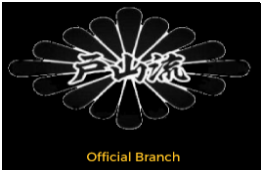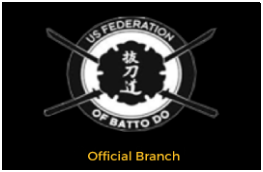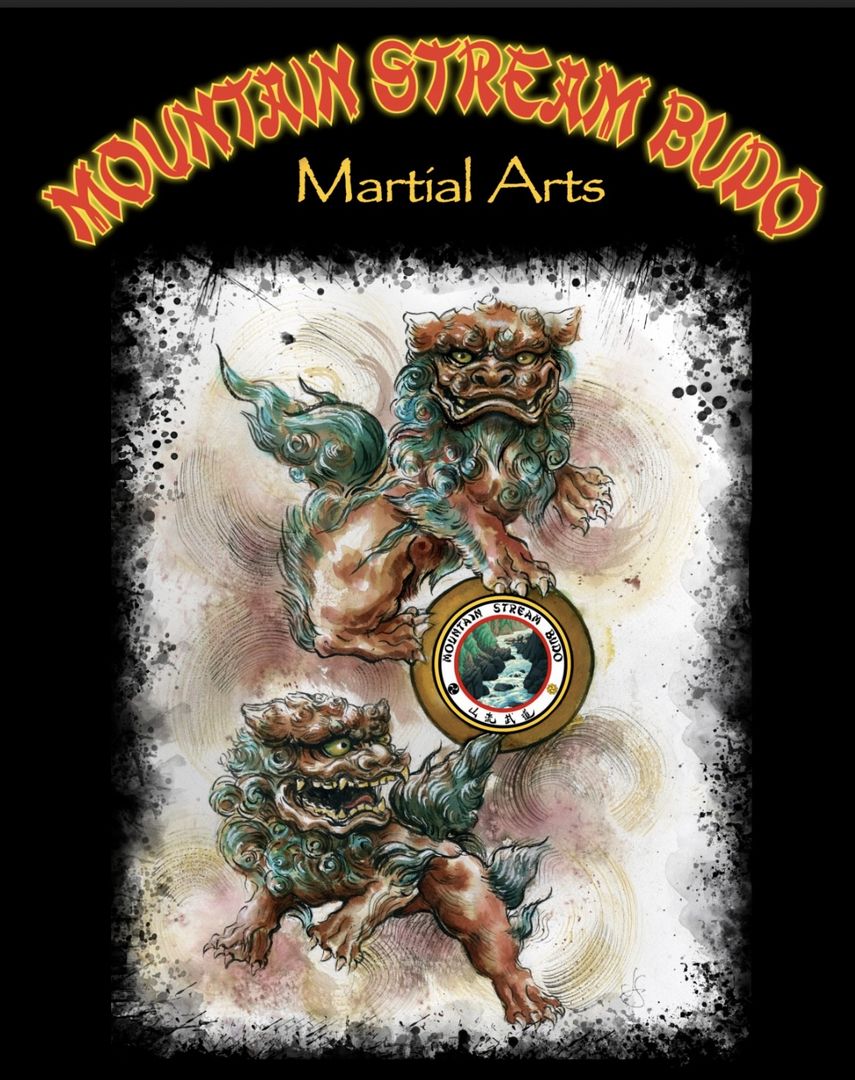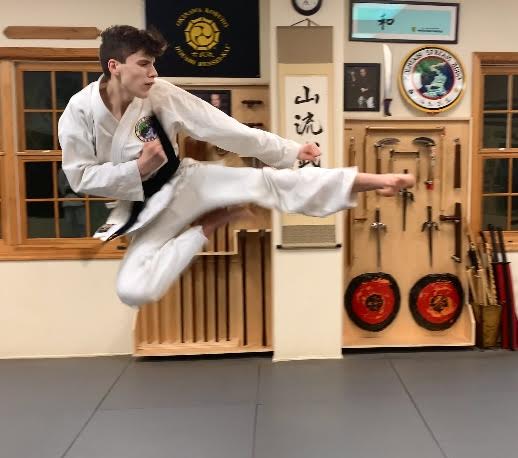
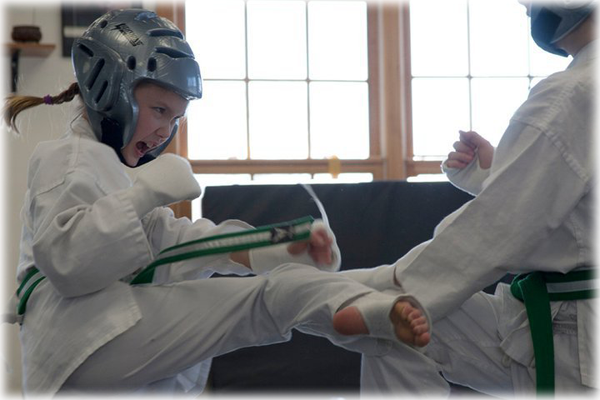
KARATE
Karate (literally translated as “empty hand”) is a traditional Okinawan striking art. Emphasis is placed on punching, kicking, and blocking/evasion techniques. Over the course of training, students will learn 21 traditional open-hand kata (forms), and will practice ippon kumite (a controlled self-defense drill), as well as non-choreographed sparring. Classes generally consist of warm-ups/calisthenics, various drills, kata, and either sparring or self-defense drills.
Classes are offered at both youth (ages 7–12) and adult levels.

LIL' DRAGONS KARATE
Lil' Dragons is a martial arts program specifically geared toward young children aged 4–6. Designed by Kimber Hill and taught worldwide, the Lil' Dragon curriculum is a fun way for kids to learn more than just martial arts basics. Lessons include safety, life skills (stranger danger, fire safety, drug awareness, first aid, etc.), manners, respect, self-control, and understanding. Classes focus on balance, strength, coordination, flexibility, teamwork, gross motor skills, and basic martial arts techniques. Stress will be placed on doing your personal best, and not being "better" than other students. The Lil' Dragon program is designed to lay a solid foundation that will allow students to flourish in a more structured class environment when they are older. In addition to learning these valuable skills and having fun, your child will grow socially, emotionally, physically, and intellectually.
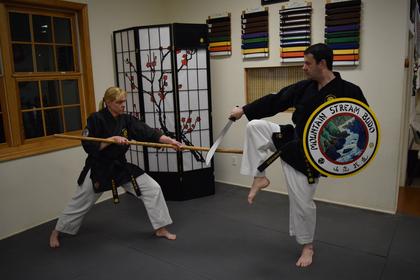
KOBUDO
Kobudo (literally translated as “ancient martial art”) is a traditional Okinawan weapons art. Over the course of training, students will learn to use 12 different primary weapons, all of which are derived from authentic Okinawan farming and fishing tools. The first six months of study are devoted to learning the roku-shaku bo (six-foot staff). Classes generally consist of a brief warm-up, after which the class is broken up into rank groups in order to work on varying curricula. Primary weapons include bo, sai, tonkua, nunchaku, eku, nunti, tekko, kuwa, kama, sansetsu kon, tinbei and rochin, and suruchin.
Mountain Stream Budo is the official New York State branch of the Okinawa Kobudo Doushi Rensei-kai ® , an international organization founded in Okinawa by Gakiya Yoshiaki-sensei, and presently presided over by Hanshi Neil Stolsmark, 9th dan. All students of kobudo at MSB will become members of the OKDR ® upon registration.
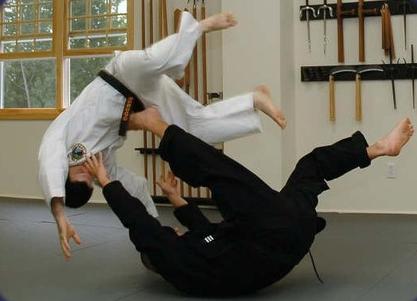
JUJITSU
Jujitsu (literally translated as “the science of softness”) is a traditional Japanese throwing and grappling art. It is the predecessor of modern judo and aikido. This program focuses on throwing, joint and bone locking, choking, controls, and self-defense against armed and unarmed attackers. Classes generally consist of a brief warm-up, followed by break-falls, rolls, body movement drills, and rank curriculum. Emphasis will also be put on pressure points and energy manipulation.
Police Tactics Jujitsu - Police and corrections officers who enroll in our program will train with a modified Police Tactics curriculum, which will include additional gun defenses, gun retention and prevention techniques, nightstick techniques, handcuffing techniques, come-along and other relevant categories.
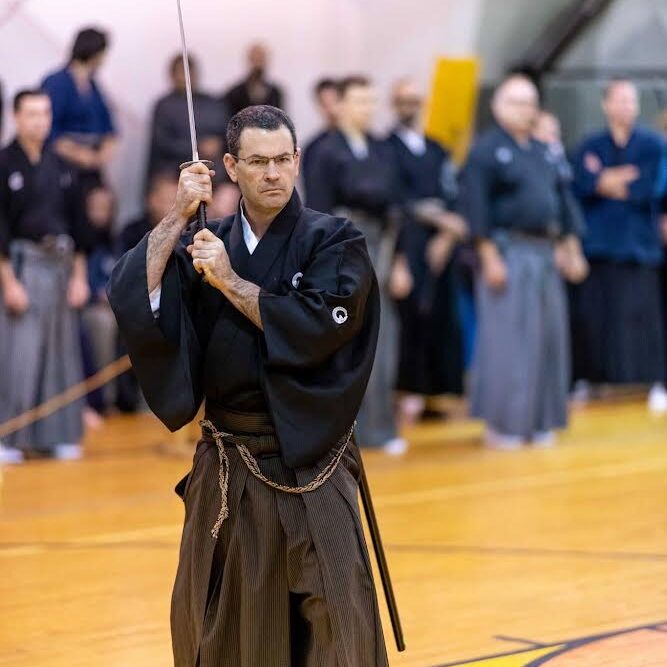
IAIDO Toyama-ryu Battodo
Iaido is the art of drawing, cutting with, and sheathing the Japanese Samurai sword.
Our system consists of traditional Battodo and Toyama-Ryu, iai art forms that are distinguished from other systems in that they apply practical techniques for sword combat practiced entirely from a standing position, and that practitioners are taught tameshigiri or test cutting.
Tameshigiri is used to test and enhance the practitioner’s ability to cut a target by using a shinken (a live, sharp Japanese sword). The swordsman’s cuts are evaluated on the precise angles of the cuts, distance between cuts, accuracy, and form. The targets are tatami mat covers (sheets of a woven straw).
Students will typically spend the first several months of training working on the basics: learning how to properly draw a sword, perform various cutting motions, and re-sheathe the sword, as well as beginning to work on the first of several kata.
Our curriculum also includes kumitachi (two-person choreographed battle), gekken (free-sparring with canvas-covered padded swords to emulate real-life battle), and tameshigiri (test cutting of tatami with sharpened blades).
Mountain Stream Budo is an official branch of the United States Federation of Battodo (USFBD) as well as the Zen Nippon Toyama-Ryu Iaido Renmei (ZNTIR). Students will become members of both of these organizations and will be eligible to test for rank from both separately, as well as from the Seizankai (Hataya Mitsuo-sensei’s personal group, based in Japan).
Noah Mitchell is an active iaido student of Douglas Firestone-sensei, owner and chief instructor at Aikido of Westchester in White Plains, New York.
